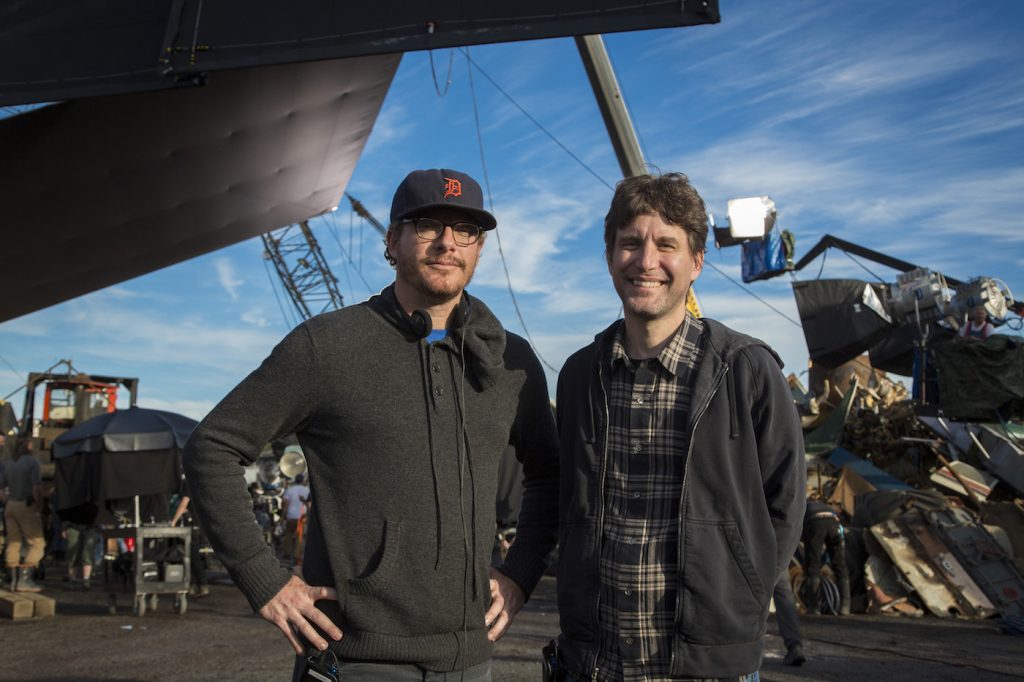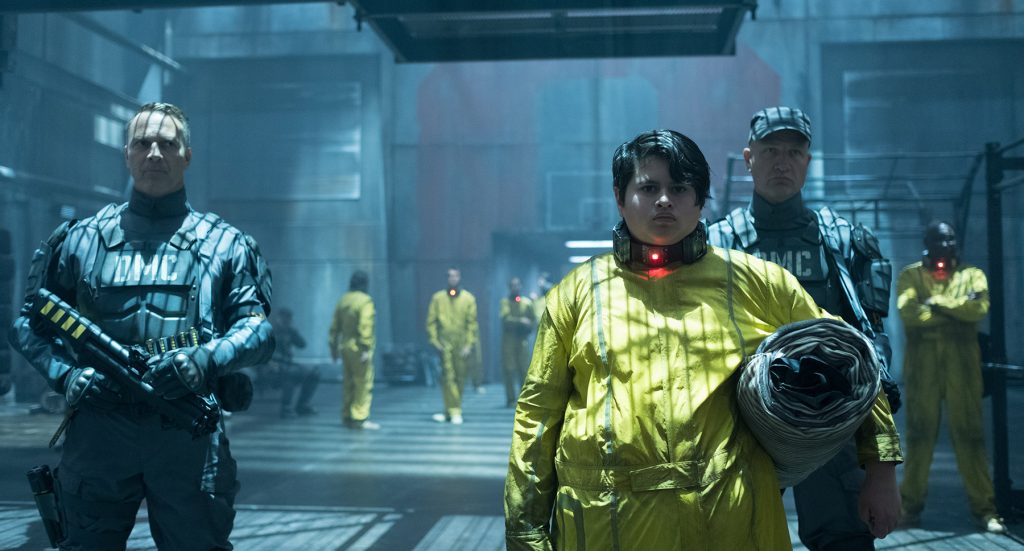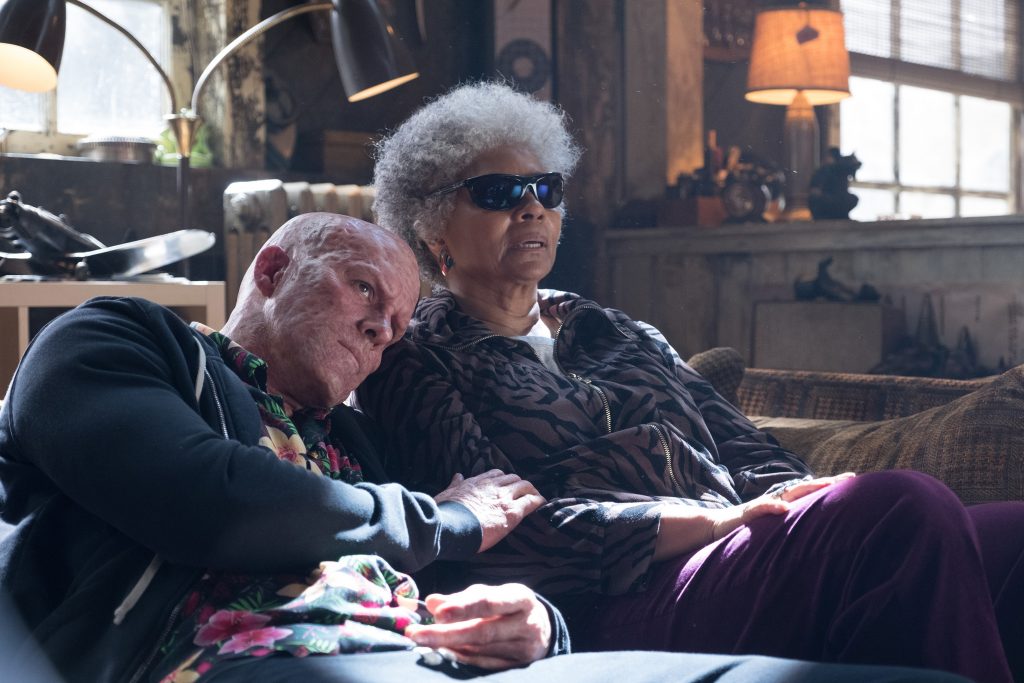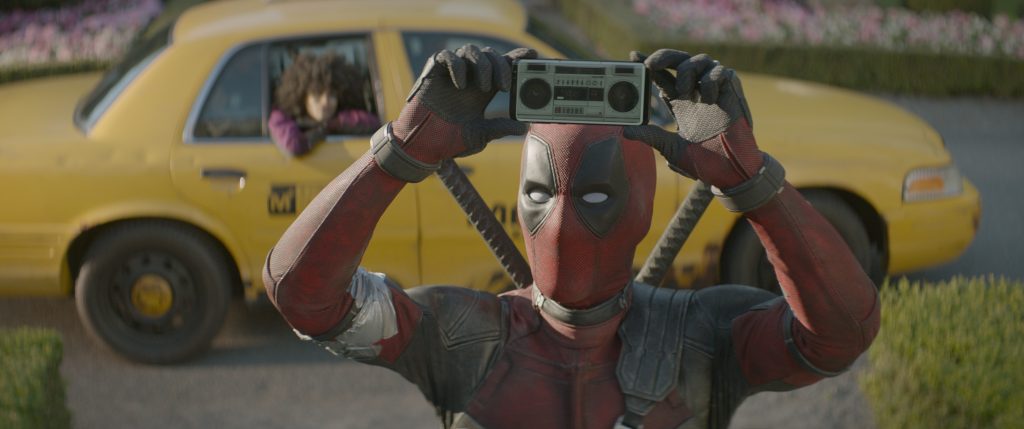Deadpool 2‘s Screenwriters on Living With Wade Wilson’s Voice in Their Heads
Armed with witty zingers from writing team Rhett Reese and Paul Wernick, Ryan Reynold’s deformed, foul-mouthed, self-healing superhero Wade Wilson powered through the profanity-laced Deadpool to such crowd-pleasing effect that Marvel Studios’ 2016 action comedy became the top-grossing R-rated movie of all time. Working on Deadpool 2, which topped the box office last weekend with a $301 million worldwide opening, Reese and Wernick tuned out the pressure and delivered another blockbuster. “We were terrified of not meeting the fans’ expectations, but sometimes all that pressure on the coal helps make a diamond,” Reese recalls. “We’ve had Deadpool’s voice living in our heads for the last ten years, so we just tried to please each other.”
In both movies, Wade “Deadpool” Wilson mocks everything that comes across his path. Within the first few minutes of Deadpool 2, he references Wolverine’s death-by-branch in Logan, Barbra Streisand, George Michaels, David Bowie, Bambi, Matthew McConnahey car commercials and the proper pronunciation of Kirsten Dunst. “Deadpool’s mouth is really his greatest weapon,” Wernick says. “He offends everyone including Fox, the DC and Marvel universes, Ryan Reynolds, us. The jokes come so fast and furious, our dream scenario is that you have to go back and re-watch the movie to enjoy the full effect.”

For Deadpool 2, Reese, Wernick and co-writer Ryan pulled characters from the Marvel comic book series and grafted them into a deliberately modest storyline: Deadpool simply wants to assemble a team of “dysfunctional lost souls” and win over an angry teenager emboldened with fists of fire (Julian Dennison). “The stakes in a Deadpool movie are never about saving the world from an alien invasion or lifting a city up in the air,” Reese says. “It’s always very personal. Deadpool is exhausting, he’s immature, childish, yet he also has a real heart and we try to mine as much of that as we could. That’s a tricky balance because we never want to go down that well-traveled path of ‘Okay this is now going to be the sappy part.’ We always undercut the emotion with a joke. That feels fresh to the audience, I think, because it’s not the traditional superhero movie they’re used to seeing.”
Reese and Wernick both grew up in Phoenix, where they shared a fondness for Superman and other straight-ahead action films. Reese explains, “We drink from the same cultural waters.” Wernick adds, “Not only do we drink from the cultural waters, sometimes we drink from the same actual water. That’s how close we are.” At age 14, Reese reviewed movies for the high school newspaper. Around the same time, Wernick stood in line for so long waiting to see The Empire Strikes Back that he suffered heat stroke and vomited. “My mom had to take my home,” he recalls. “I’m sure somehow that created a path in my brain: ‘Hey, Hollywood’s going to be so painful sometimes it’ll make you want to throw up.’ But I’ve always loved storytelling and movies. I never anticipated the path that led me here today but I’m happy it did.”
The writers’ fondness for superhero movies peaked when they saw Iron Man in 2009. “The tone that [Marvel Studios president] Kevin Feige and Robert Downey and the screenwriters landed on was sort of like the ten billion-dollar tone,” says Reese. “It was fun and it was quips and it didn’t take itself too seriously, yet the movie had real stakes.”

By the time Iron Man launched, Reese and Wernick had created the Joe Schmo Show for Spike TV followed by their 2009 hit Zombieland. “Zombieland poked fun at the zombie movies that came before it and Joe Schmo Show was both a reality show and a parody of reality shows,” says Wernick. “It trained us in a weird way to pick apart a genre, see what makes it ridiculous, lean into those foibles and still present an example of the genre for the audience. Deadpool 2 basically has it both ways. It’s a superhero movie that simultaneously functions as a commentary on superhero movies. To do that, you’ve got to have an affection and a real knowledge of the genre. And we’ve basically seen them all.”
Zombieland put Reese and Wernick on the map in Hollywood, but it was their dead-serious HBO pilot about a voyeur called Watch that landed them the Deadpool gig. Wernick says, “There was not an ounce of comedy in Watch, but this weird dark piece made Ryan say ‘These are my guys. They get it.’ Watch had pathos and darkness, and Deadpool has a lot of that too. He’s dying of cancer, he loses the love of his life and his vanity.” Reynolds met the writers for lunch at Hollywood’s Chateau Marmont, Wernick recalls. “We started kicking ideas around that afternoon and a lot of what we discussed on that day ten years ago is what ended up making it onto the screen for the first Deadpool.”

For Deadpool 2, Reese, Wernick and Reynolds divided their story outline into thirds and swapped scenes until they’d hammered out a final draft for 20th Century Fox studio execs. Then the real work began. “The script we turned in was almost the beginning of the process,” explains Wernick. “Since Deadpool wears a mask, you can put words into his mouth all the way through post-production. We were writing jokes three weeks ago that we were able to add during ADR sessions, which is a great gift.” Reese adds. “Or a curse.” Wernick clarifies, “Because we often worked harder in post then we did leading up to and during the physical production.'”
During the 80-day Vancouver shoot, the trio often improvised one-liners on the fly. It’s a joke-generating process mirrored on screen in Deadpool 2 when Josh Brolin’s stoic warrior-from-the-future character Cable meets “X-Force” characters for the first time. “Cable walks into the room and says ‘I got a proposition for you.’ That’s his line. And Deadpool says ‘He’s really teeing it up for us isn’t he? Who wants to make the first joke?’ And then everybody piles on with jokes. That’s basically what we did on set sometimes so we’d have choices during the edit. We’d wind up with ten really funny jokes on the cutting room floor.”

Case in point: The movie culminates in what appears to be an endless death scene wherein Deadpool keeps reviving himself to make one more wisecrack before he meets his maker. “Ryan’s an improv machine,” says Reese. “In the original cut, that scene had so many jokes stuffed in there, it went on about two minutes longer. Finally you just cry ‘Uncle!’ like, ‘Okay, he’s died too many times.'” Wernick adds, “Yeah. Enough is enough.”
Featured image: Deadpool (Ryan Reynolds) and Colossus in Twentieth Century Fox’s DEADPOOL 2. Photo Credit: Courtesy Twentieth Century Fox.



